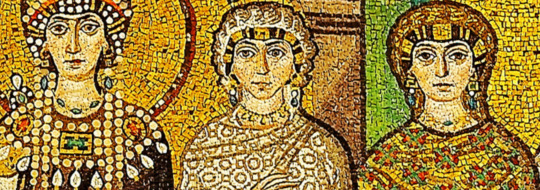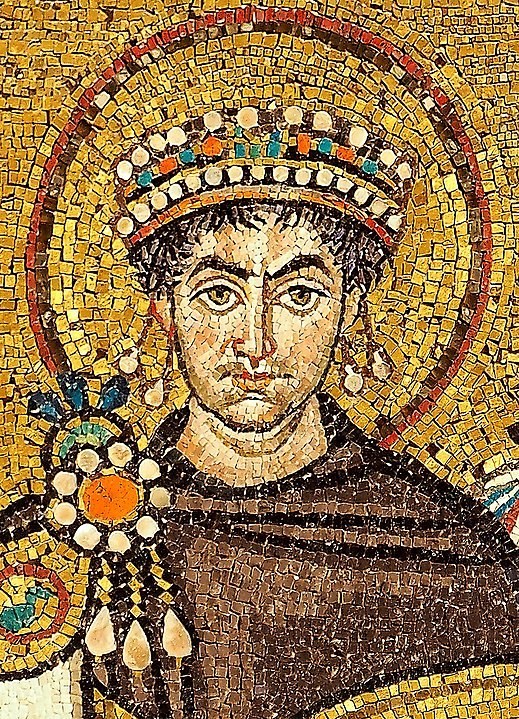#byzantine empress
Text

Empress Theodora (490-548).
She is a saint in the Eastern Orthodox Church and the Oriental Orthodox Church, commemorated on 28 June.
#byzantium#byzantine empire#empress theodora#justinian dynasty#eastern roman empire#saints#orthodox church#orthodox christianity#christianism#byzantine empress#royalty#icon#icons
4 notes
·
View notes
Text

Et voila! I know you’ve all been waiting for it 🤭🤭
#byzantium#byzantine empire#byzantine empress#theodora palaiologina#anna of savoy#maria of trebizond#nicaean empire#empire of nicaea#13th century#14th century#15th century#history art#digital art#pride#lesbian#trans pride#pride art#greek tag#roman tag#italian tag#german tag#rus tag#bulgar tag#outremer#hungary tag#armenia tag#france tag
15 notes
·
View notes
Text
Everyone is too harsh on Irene of Athens. I mean, if you weren't her son or an iconoclast, she was a pretty pleasant person to hang out with.
#Irene of Athens#byzantine empire#byzantine#byzantium#eastern roman empire#Byzantine empress#Empress
23 notes
·
View notes
Photo

1900 Sarah Bernhardt in character as Theodora the Empress of Byzantium (Empress Theodora) in "Theodora: A Drama in Five Acts and Eight Tableau" (1885) by Victorien Sardou. Premiered: Theatre de la Porte Saint-Martin in Paris, France.
Sardou's enthusiasm for historical authenticity was shared by his star. Weeks before ordering her costumes, she journed to Ravenna and stood long hours in the Church of San Vitale studying the magnificent mosaics with their startling portraits of Theodora and Justinian staring menacingly forth from barbaric gold. She made sketches of every robe, every fold, every detail or ornamentation. When she returned to Paris she had completed in detail a dressmaker's design for each outfit, as well as those for her stage jeweller, even to that death-dealing hairpin. Her wardrobe along cost more than the average production. Her costumer figured out that toiling in her work rooms she and her assistants had sewn on by hand more than 4,500 'gems'. (x)
Her costume is a replica of the celebrated mosaic of the Byzantine Virgin in the Church of Ravenna -- her robe is yellow satin embroidered with topazes; her coiffure is ablaze with jewels, and in her hand she carries a white lily, which tradition says was Théodora's favourite flower. The Empress seats herself on a couch of tigers' skins, and gives audience to her courtiers and to ambassadors from foreign lands.
#1900#drama#sarah bernhardt#oriental costum#costume#oriental#byzantine costume#byzantine#theodora#empress theodora#Theodora the Empress of Byzantium#byzantine empress#feminist#victorien sardou#theatre de la porte saint-martin#paris#france#french actress#bernhardt#la emperatriz theodora#the empress theodora
20 notes
·
View notes
Text
Irene of Athens - The First Sole Byzantine Empress ~ A guest post by Powee Cheldran
Concept art of Empress Irene of Athens (r. 797-802) by Powee Celdran
The Freelance History Writer is pleased to welcome back Powee Celdran with an article about an early Byzantine Empress.
Empress Irene of Athens is perhaps one of the most fascinating women in Byzantine if not, in all of medieval history, having a long and eventful story arc. She went from empress-consort to empress-regent, and…

View On WordPress
#Byzantine Emperor#Byzantine Empress#Byzantine history#Charlemagne#Constantine#Irene of Athens#Leo#Michael#women&039;s history
1 note
·
View note
Text

Antonina: a powerful woman in the sixth-century Roman world
"Antonina was the most powerful uncrowned woman in the sixth-century Roman world. She deposed Pope Silverius, arranged for the sacking of John the Cappadocian, traveled across the Mediterranean with her husband, and even occasionally inserted herself into the running of his army. She knew soldiers, officers, the emperor, popes, bishops, and historians, and at various times commanded them, pleaded with them, and intimidated them. This is a remarkable resume, virtually unparalleled among Roman military wives, and certainly without parallel in the sixth century. She was a formidable woman and, like her friend and patron Theodora, one who was occasionally feared. If the reputation of Belisarius is sometimes inflated in modern evaluations, the reputation of Antonina has been chronically underappreciated. Historians have focused far too much on the Secret History story of Antonina’s affair and her supposed domination of Belisarius, and far too little on her exceptional career. She is evidence that elite women in the sixth century could take on public roles alongside their husbands."
Belisarius & Antonina: Love and war in the age of Justinian, David Alan Parnell
#antonina#leaders#powerful women#history#women in history#women's history#6th century#belisarius#byzantine empire#justinian I#empress theodora
288 notes
·
View notes
Text


Early Byzantine, The Emperor Justinian and Empress Theodora with their Court Retinues, ca. 547, mosaic (San Vitale, Ravenna)
Mosaics in situ (flanking apse windows beneath Christ in Majesty mosaic), details of Emperor and Empress



1K notes
·
View notes
Text

Empress Theosthena, Beloved of the Romans. Inspired by L'imperatrice Theodora by Benjamin-Constant.
Painted November 2020.
530 notes
·
View notes
Text

If I had a nickel for every time Veneziano stole the body of a Saint to bring back to Venice, I'd have two nickels.
Which isn't a lot but it's weird that it happened twice.
#hws Veneziano#hws Italy#hetalia memes#historical hetalia#Romano's salty bc one of them was a patron saint of his that he gifted to the Byzantine empress#“can I have her back??” “Sure :)! Only for seven days though ❤️”#I'm in Venice today so I've got goofy ahh venetian history on the mind#petition to throw APH Veneziano into the sea
159 notes
·
View notes
Text

Justinian and Theodora romance sketch! I totally love these two as a couple-- the courtesan that married a prince!-- and there's not much art for them out there. So here it is, @byzantine-suggestions and @margaretkart!
#justinian#justinian and theodora#theodora#empress theodora#art#illustration#sketchbook#sketch#romance art#byzantine empire#byzantium#ancient rome
88 notes
·
View notes
Text

When reading "The Remarried Empress" for the first time, I was so intrigued by Navier's monologue in the first chapter. I thought the premise of the webtoon was great, and I was so excited to learn more about the former Empresses and the world around Navier. Unfortunately, the former Empresses were almost never mentioned and the world building wasn't a central part of the story.
I was so disappointed that I decided to make my own. Thanks to the really talented @vanisagi27 my vision for the very first Trovy Empress came to life.
Here's the lore I created for her:
Ellinier Constantina Trovy
The first Trovy Empress (6th empress of the Empire) .
The Eastern empire was 200 years old when this marriage happened. The Eastern Empire was still in its earlier years. After the 60 year war, it needed a strong monarch to govern it and maintain what was conquered during the war. A marriage was arranged with the third daughter of the Trovy family. This marriage allowed the Trovy's to keep their kingdom intact and created an alliance that lasted over a thousand years.
The Trovy kingdom was famous for educating their daughters and sons the same way. All children were educated in politics, finances, warfare and management, with only the heir having to be versed in martial arts.
This alliance benefitted both parties. The Eastern Empire greatly benefitted from the guidance of a strong and capable Empress and the Trovy kingdom was able to maintain its independence. The Eastern Empire continued to conquer its neighboring kingdoms until only 5 were left in the Old continent:
- The Trovy kingdom from the North East coast;
- The Bluvohan kingdom from the South West coast;
- The South Kingdom from the Great Plains;
- The Whitemond kingdom from the Deep West;
- and The Western Kingdom of the Lazlo.
She was married to Julius Antonius Victor for 42 years. They got married when she was 20 years old (he was 3 years older than her). Even though there was no romantic love betweem them their marriage was a happy one. They maintained a close friendship throughout their lives. The Empress spent most of her free time with her close friend Marchioness Falhan. The Emperor on the other hand spent most of his free time with his childhood friend Duke Tuania.
She was beloved by the commoners. She created laws to protect the conquered people and made it legal for the conquered kingdoms to sent representative to the Senate. She made sure every conquered nation was present when the Foundation Law was written. This legal code, although modified is still being used today.
She gave birth to 6 children. 4 lived to adulthood. Her oldest son inherited the throne.
P.S.
I know that some things are not making sense right now (for example, the last name of the Emperor being Victor instead of Vict), but I promise it will make sense later.
Also, I made the Trovy a foreign royal family instead of nobles of the Eastern Empire.
#the remarried empress#empress navier#navier ellie trovi#rashta#sovieshu#webtoon#art#fantasy#byzantine inspired fashion
35 notes
·
View notes
Text
Empress Theodora entering Hagia Soph..
oh wait, it's Alicent.

#byzantine#byzantium#game of thrones#house of the dragon#hotd#alicent hightower#rhaenyra targaryen#daemon targaryen#hagia sophia#constantinople#roman empire#late roman empire#late antiquity#house targaryen#team green#team black#hbo#hbo max#theodora#justinian#empress
26 notes
·
View notes
Text

Been holding onto this beauty for a while 💕💜💙
The lovely Empress Theodora and her gossiping friend Antonina
#empress theodora#justinian the great#antonina#flavius belisarius#byzantium#byzantine empire#byzantine empress#6th century#history art#sketch#digital art#greek tag#roman tag
130 notes
·
View notes
Text


Also some Zoe/Elena stills from the Internet™️
This was her most accurate Byzantine dress 💜💜💜
#vikings valhalla#valhalla spoilers#netflix valhalla#empress zoe#elena valhalla#sofia lebedeva#byzantine things
10 notes
·
View notes
Photo


1887 Jean-Joseph Benjamin-Constant (French, 1845–1902), The Impress Theodora (La Emperatriz Theodora), Oil on Canvas.
#1887#painting#portrait#jean-joseph benjamin-constant#jean-joseph constant#french painter#Oriental subjects#oriental#byzantine#the impress theodora#the empress theodora#la emperatriz theodora#La Emperatriz#feminist#icon
66 notes
·
View notes
Text

"The most notable players in Palaiologue politics were the empresses Yolanda-Irene of Montferrat and Anna of Savoy, and on the whole their record is woeful: Yolanda-Irene of Montferrat, second wife of Andronikos II, was unable to comprehend the succession rights of her eldest stepson, Michael IX, and since her husband remained obstinately unmoved by her representations she flounced off with her three sons to Thessalonika where she kept a separate court for many years from 1303 to her death in 1317. From her own domain she issued her own decrees, conducted her own foreign policy and plotted against her husband with the Serbs and Catalans: in mitigation, she had seen her five-year-old daughter married off to the middle-aged Serbian lecher Milutin, and considered that her eldest son John had been married beneath him to a Byzantine aristocrat, Irene Choumnaina. She died embittered and extremely wealthy.
When Yolanda’s grandson Andronikos III died early, leaving a nine-year old son John V and no arrangements for a regent, the empress Anna of Savoy assumed the regency. In so doing she provoked a civil war with her husband’s best friend John Kantakouzenos, and devastated the empire financially, bringing it to bankruptcy and pawning the crown jewels to Venice, as well as employing Turkish mercenaries and, it appears, offering to have her son convert to the church of Rome. Gregoras specifically blames her for the civil war, though he admits that she should not be criticised too heavily since she was a woman and a foreigner. Her mismanagement was not compensated for by her later negotiations in 1351 between John VI Kantakouzenos and her son in Thessalonika, who was planning a rebellion with the help of Stephen Dushan of Serbia. In 1351 Anna too settled in Thessalonika and reigned over it as her own portion of the empire until her death in c. 1365, even minting her own coinage.
These women were powerful and domineering ladies par excellence, but with the proviso that their political influence was virtually minimal. Despite their outspokenness and love of dominion they were not successful politicians: Anna of Savoy, the only one in whose hands government was placed, was compared to a weaver’s shuttle that ripped the purple cloth of empire. But there were of course exceptions. Civil wars ensured that not all empresses were foreigners and more than one woman of Byzantine descent reached the throne and was given quasi-imperial functions by her husband.
Theodora Doukaina Komnene Palaiologina, wife of Michael VIII, herself had imperial connections as the great-niece of John III Vatatzes, and issued acts concerning disputes over monastic properties during her husband’s reign, even addressing the emperor’s officials on occasion and confirming her husband’s decisions. Nevertheless, unlike other women of Michael’s family who went into exile over the issue, she was forced to support her husband’s policy of church union with Rome, a stance which she seems to have spent the rest of her life regretting. She was also humiliated when he wished to divorce her to marry Constance-Anna of Hohenstaufen, the widow of John III Vatatzes.
Another supportive empress consort can be seen in Irene Kantakouzene Asenina, whose martial spirit came to the fore during the civil war against Anna of Savoy and the Palaiologue ‘faction’. Irene in 1342 was put in charge of Didymoteichos by her husband John VI Kantakouzenos; she also organised the defence of Constantinople against the Genoese in April 1348 and against John Palaiologos in March 1353, being one of the very few Byzantine empresses who took command in military affairs. But like Theodora, Irene seems to have conformed to her husband’s wishes in matters of policy and agreed with his decisions concerning the exclusion of their sons from the succession and their eventual abdication in 1354.
Irene and her daughter Helena Kantakouzene, wife of John V Palaiologos, were both torn by conflicting loyalties between different family members, and Helena in particular was forced to mediate between her ineffectual husband and the ambitions of her son and grandson. She is supposed to have organised the escape of her husband and two younger sons from prison in 1379 and was promptly taken hostage with her father and two sisters by her eldest son Andronikos IV and imprisoned until 1381; her release was celebrated with popular rejoicing in the capital. According to Demetrios Kydones she was involved in political life under both her husband and son, Manuel II, but her main role was in mediating between the different members of her family.
In a final success story, the last Byzantine emperor, Constantine XI, owed his throne to his mother. The Serbian princess Helena Dragash, wife of Manuel II Palaiologos, in the last legitimating political manoeuvre by a Byzantine empress, successfully managed to keep the throne for her son Constantine and fend off the claims of his brother Demetrios. She arranged for Constantine’s proclamation as emperor in the Peloponnese and asserted her right to act as regent until his arrival in the capital from Mistra in 1449.
Despite the general lack of opportunity for them to play a role in politics, Palaiologue imperial women in the thirteenth century found outlets for their independent spirit and considerable financial resources in other ways. They were noted for their foundation or restoration of monastic establishments and for their patronage of the arts. Theodora Palaiologina restored the foundation of Constantine Lips as a convent for fifty nuns, with a small hospital for laywomen attached, as well as refounding a smaller convent of Sts Kosmas and Damian. She was also an active patron of the arts, commissioning the production of manuscripts like Theodora Raoulaina, her husband’s niece. Her typikon displays the pride she felt in her family and position, an attitude typically found amongst aristocratic women.
Clearly, like empresses prior to 1204, she had considerable wealth in her own hands both as empress and dowager. She had been granted the island of Kos as her private property by Michael, while she had also inherited land from her family and been given properties by her son Andronikos. Other women of the family also display the power of conspicuous spending: Theodora Raoulaina used her money to refound St Andrew of Crete as a convent where she pursued her scholarly interests.
Theodora Palaiologina Angelina Kantakouzene, John Kantakouzenos’s mother, was arguably the richest woman of the period and financed Andronikos III’s bid for power in the civil war against his grandfather. Irene Choumnaina Palaiologina, in name at least an empress, who had been married to Andronikos II’s son John and widowed at sixteen, used her immense wealth, against the wishes of her parents, to rebuild the convent of Philanthropes Soter, where she championed the cause of ‘orthodoxy’ against Gregory Palamas and his hesychast followers. Helena Kantakouzene, too, wife of John V, was a patron of the arts. She had been classically educated and was the benefactor of scholars, notably of Demetrios Kydones who dedicated to her a translation of one of the works of St Augustine.
The woman who actually holds power in this period, Anna of Savoy, does her sex little credit: like Yolanda she appears to have been both headstrong and greedy, and, still worse, incompetent. In contrast, empresses such as Irene Kantakouzene Asenina reflect the abilities of their predecessors: they were educated to be managers, possessed of great resources, patrons of art and monastic foundations, and, given the right circumstances, capable of significant political involvement in religious controversies and the running of the empire. Unfortunately they generally had to show their competence in opposition to official state positions. While they may have wished to emulate earlier regent empresses, they were not given the chance: the women who, proud of their class and family, played a public and influential part in the running of the empire belonged to an earlier age."
Byzantine Empresses: Women and Power in Byzantium AD 527-1204, Lynda Garland
#history#women in history#historyedit#queens#empresses#byzantine empire#byzantine history#medieval women#13th century#14th century#15th century#historyblr#historical figures#byzantine empresses#irene of montferrat#anna of savoy#helena dragas#Theodora Doukaina Komnene Palaiologina#Irene Kantakouzene Asenina#Helena Kantakouzene
61 notes
·
View notes